|
|
THE ELM TREES
American Elm, Slippery Elm, Rock
Elm, and Hackberry
Ulmaceae, The Elm Family
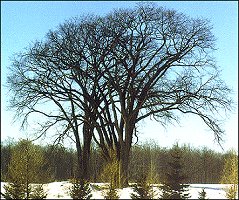 The
elms belong to a temperate
family and have about 15 genera with
over 150 species of trees and shrubs. A few species are tropical. The United
States has five genera but only two contain common tree species. Both of these
genera (Ulmus and Celtis) occur in the U.P. American
elm and slippery elm are the most common. Rock elm and hackberry are rare. Elm
fruits are round samaras which ripen
in the spring. Hackberry has berry-like fruits that ripen in the fall. The
twigs of elms and hackberries have a zig-zag arrangement.
The three elms are similar in appearance. leaves and twigs are variable and
sometimes difficult to distinguish.
The
elms belong to a temperate
family and have about 15 genera with
over 150 species of trees and shrubs. A few species are tropical. The United
States has five genera but only two contain common tree species. Both of these
genera (Ulmus and Celtis) occur in the U.P. American
elm and slippery elm are the most common. Rock elm and hackberry are rare. Elm
fruits are round samaras which ripen
in the spring. Hackberry has berry-like fruits that ripen in the fall. The
twigs of elms and hackberries have a zig-zag arrangement.
The three elms are similar in appearance. leaves and twigs are variable and
sometimes difficult to distinguish.
 AMERICAN ELM
(Ulmus americana)
AMERICAN ELM
(Ulmus americana)
Other
Names: Soft Elm, Water Elm, or White Elm
Key ID Features: Leaves, Form, Fruits, Layered Bark
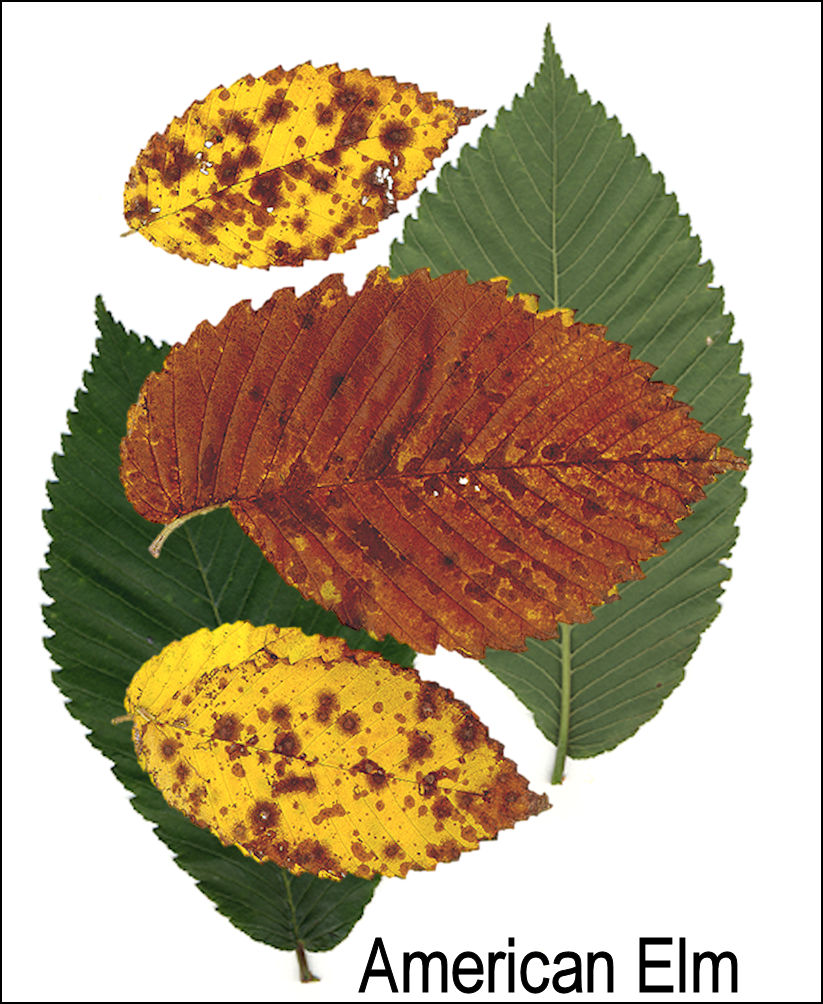
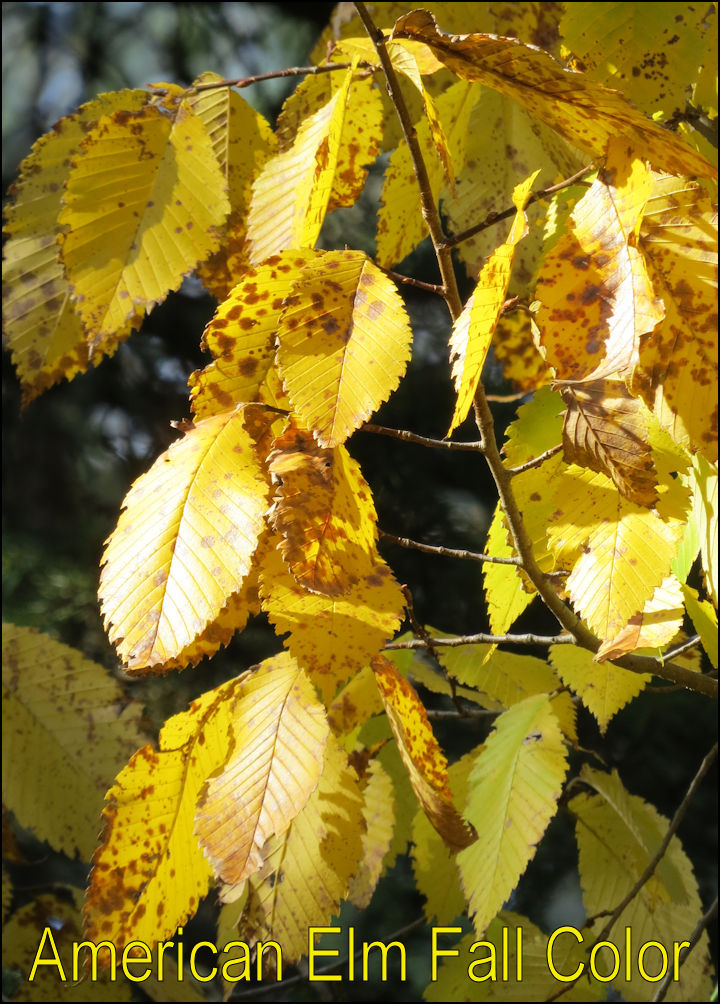

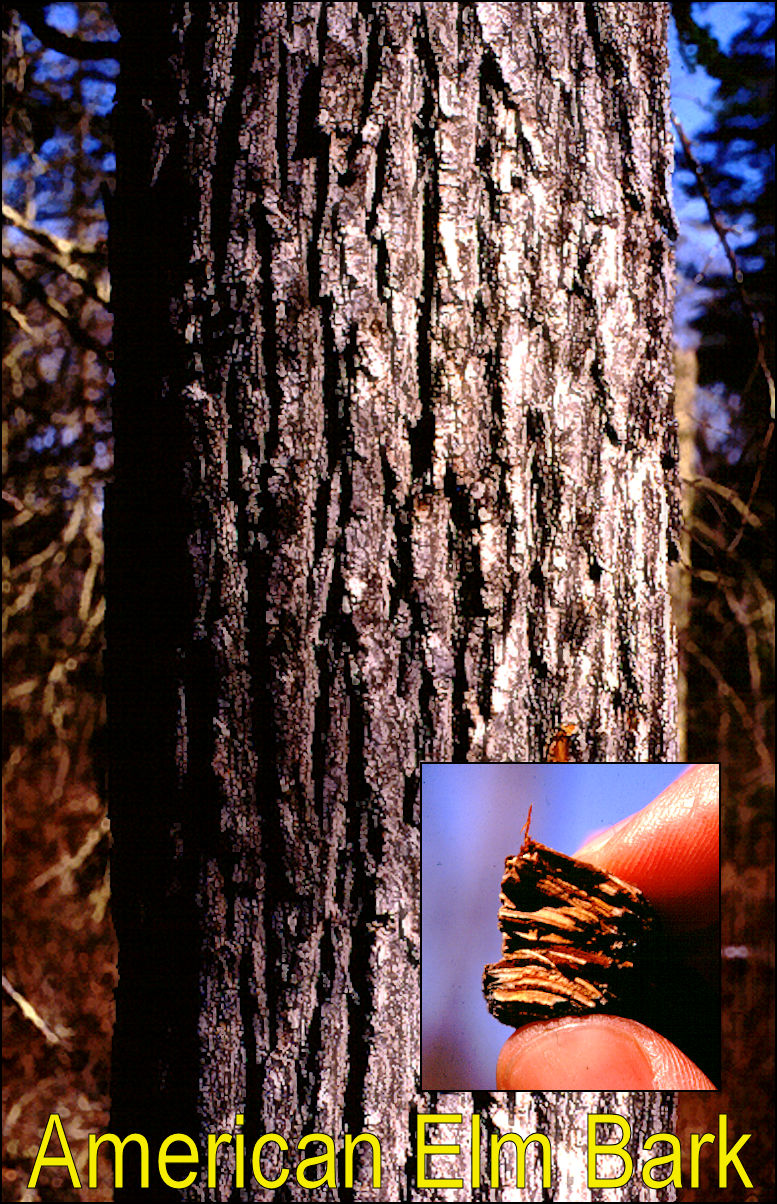
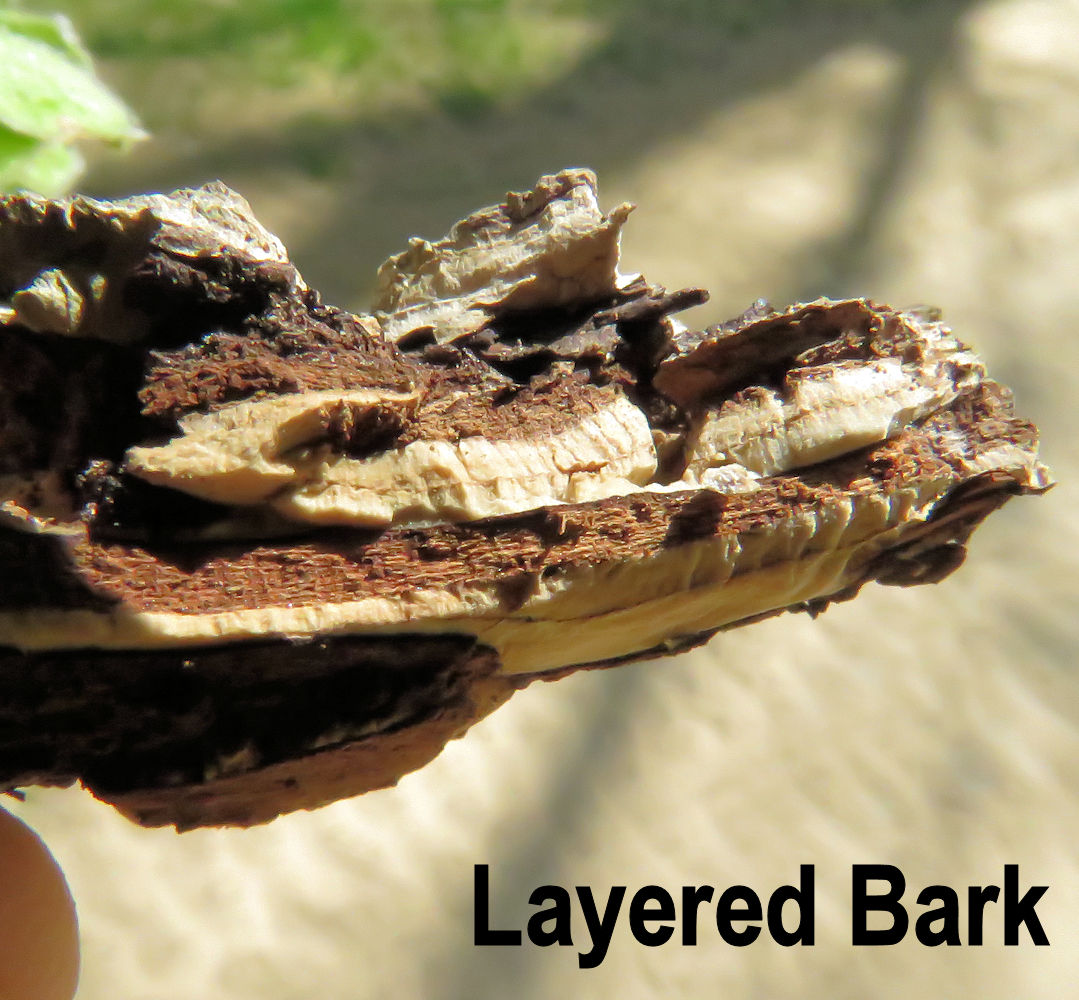
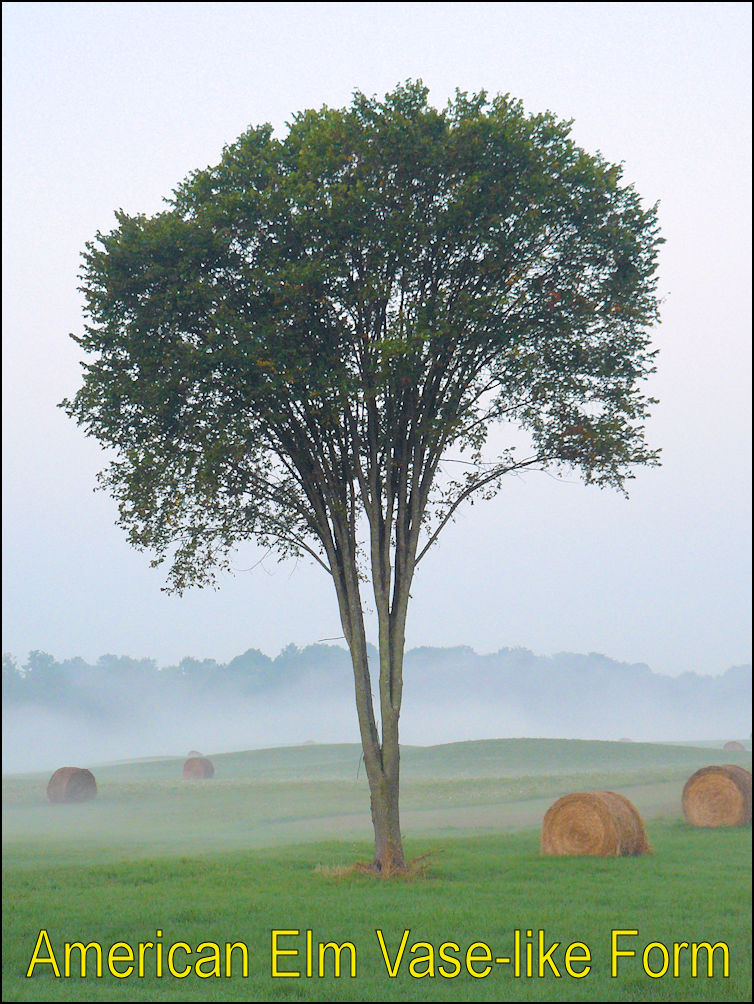
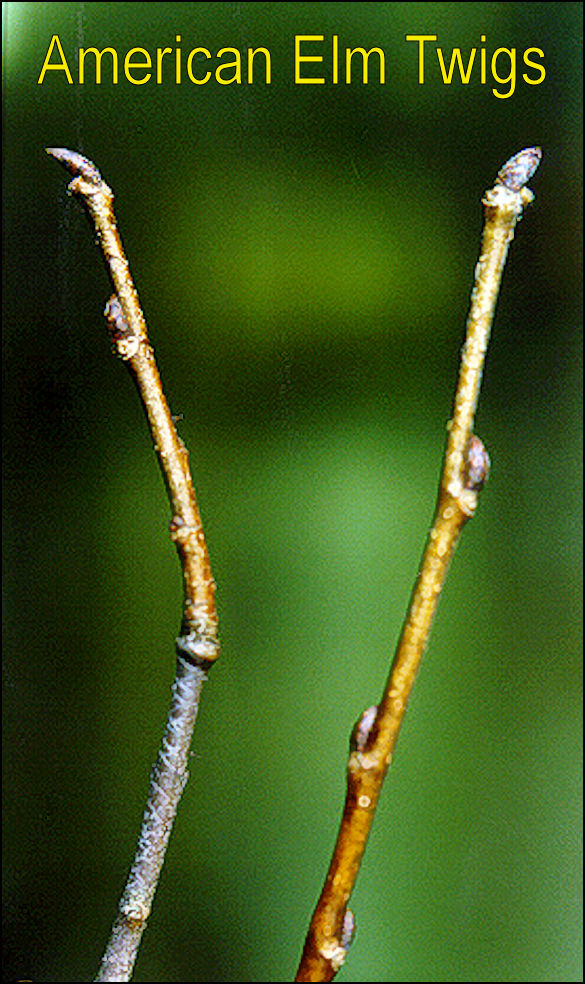
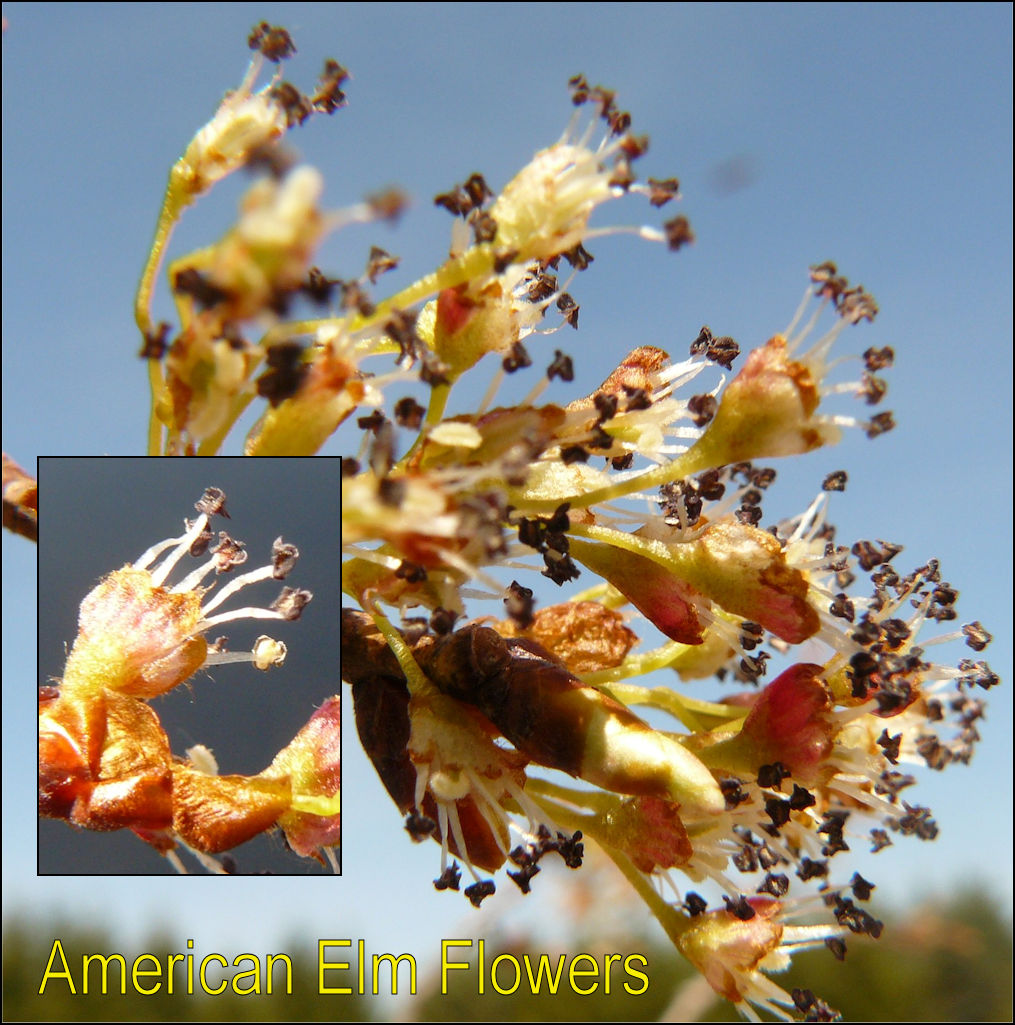
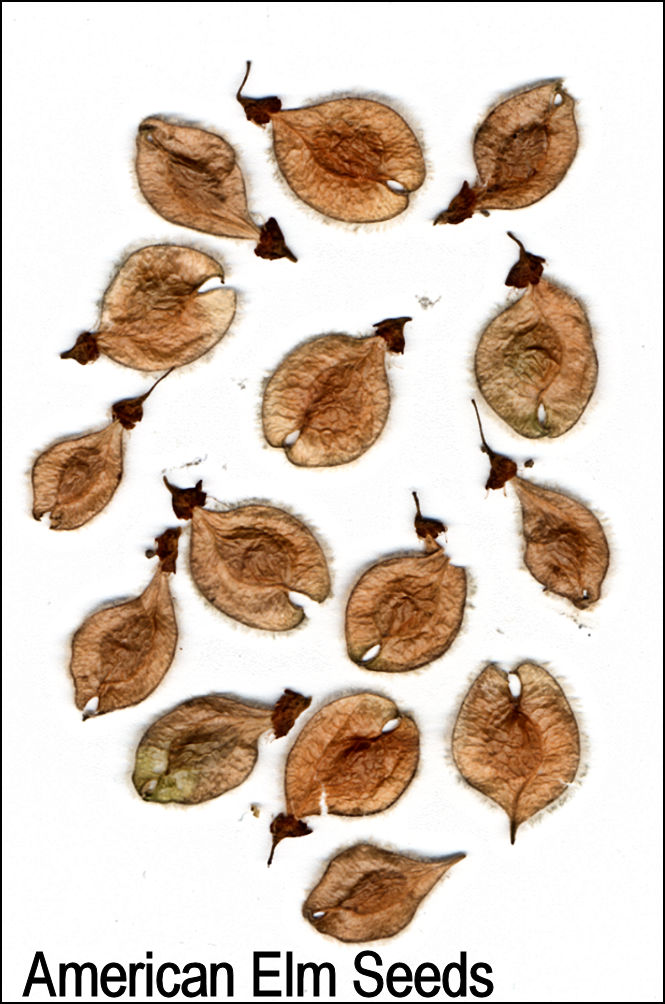
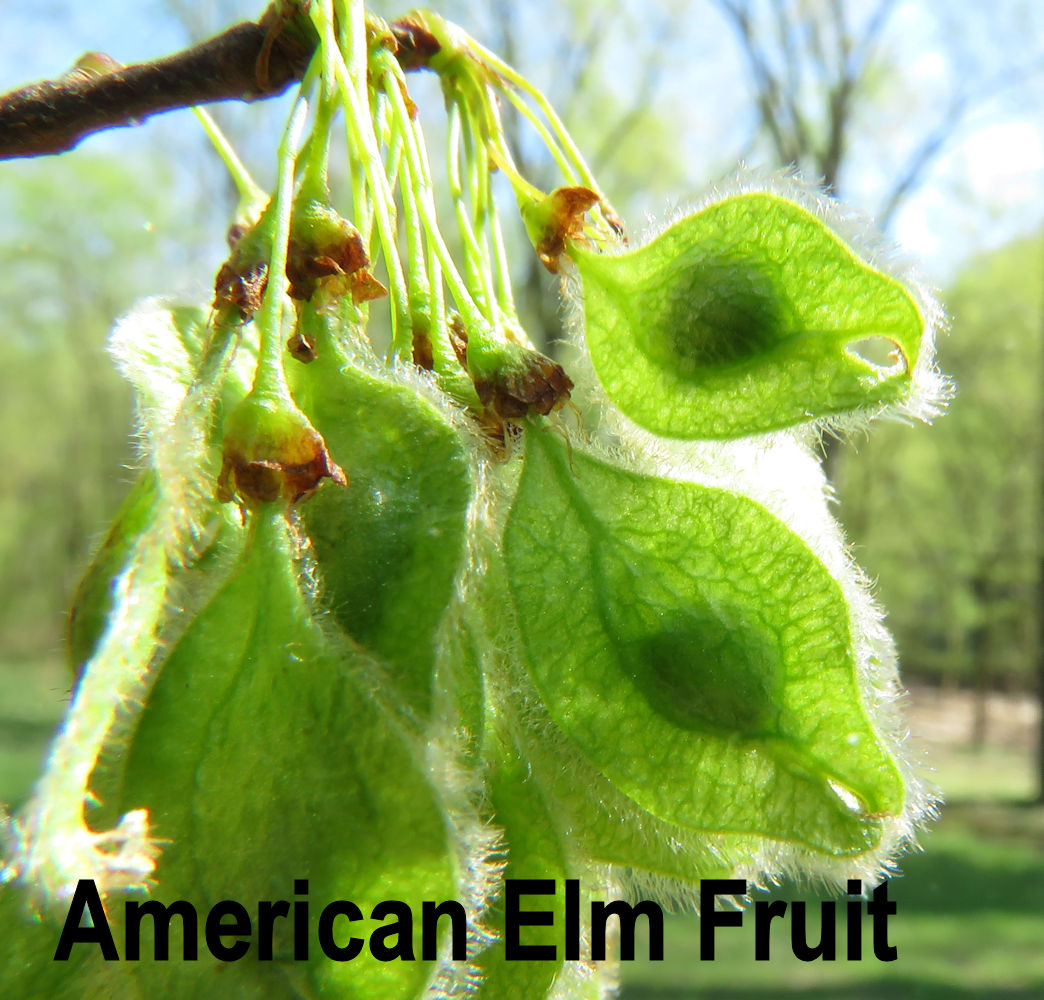
LEAVES are simple, 4-6 inches
long, double-toothed, with an unequal leaf base. Samaras are 1/2 inch long with a distinct notch
and fuzzy margin. TWIGS are
slender and brown, younger TWIGS can be somewhat fuzzy. Terminal
BUDS are angled from the TWIG at about 45 degrees. The BARK is roughly furrowed with
distinct red & white layers seen in cross-section. American elm has one of the
most easily recognized tree silhouettes.
BRANCHES fork at sharp or V-shaped angles pointing upward then gradually arching to the
outside of the crown, giving the tree a very graceful, vase-like appearance.
American elm usually grows in rich, deep SOILS, often in flood-plains and sometimes in
association with northern hardwoods on better sites. Unfortunately, the American elm
has fallen victim to the Dutch elm disease (a fungus named Ceratocystis ulmi,
related to oak wilt, C. fagacearum). Once a major component of our
hardwood forests and a common urban tree, almost all trees larger than 8 inches in
diameter have been killed. Common pests: loopers, cankerworms, mourning cloak, tussock moths, carpenter worm, oak twig pruner, Dutch elm disease.
 SLIPPERY ELM
(Ulmus rubra)
SLIPPERY ELM
(Ulmus rubra)
Other
Names: Gray Elm, Red Elm, or Soft Elm
Key ID Features: Leaves, Layered Bark, Inner Bark, Fruits

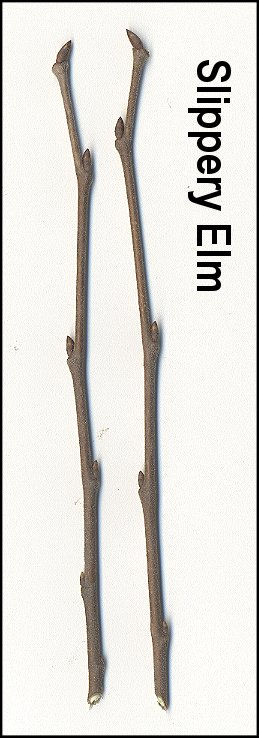
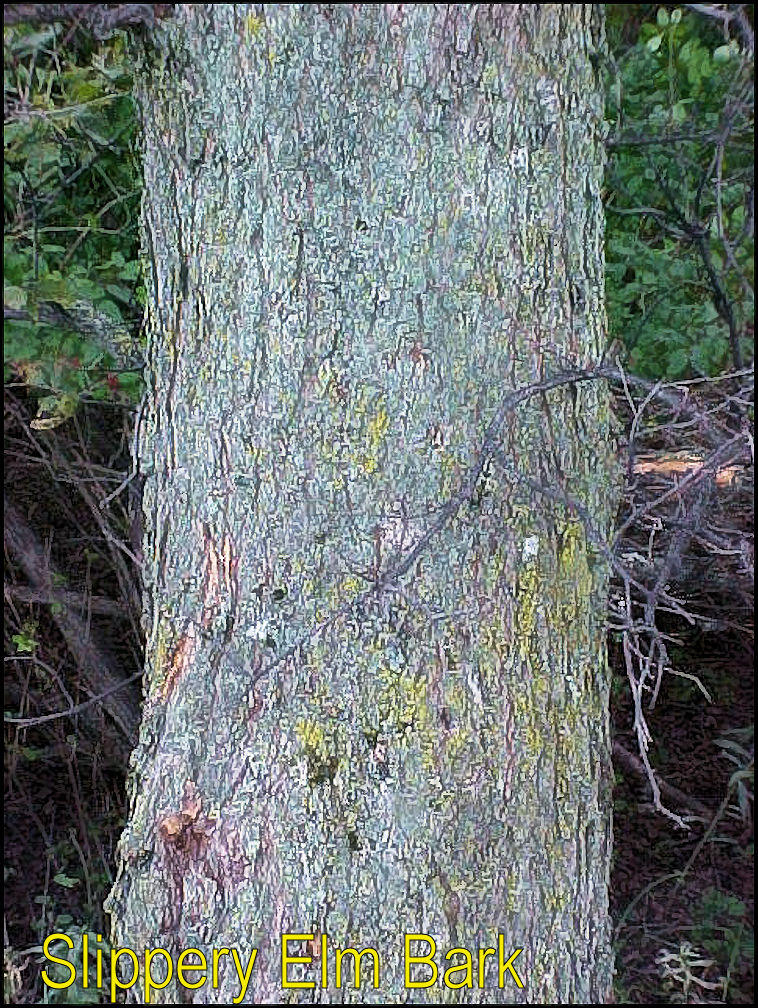
LEAVES are almost the same
as American elm, but are much scratchier due to high silica content in the leaf.
Samaras are a bit larger than American elm but
without the distinct notch and fuzzy margin. The BARK is similar, too, except the
cross-section lacks the white or cream-colored layer. The INNER BARK has a faint licorice
smell and becomes very slimy when chewed, thus the name "slippery" elm.
BRANCHES form U-shaped crotches. TWIGS are similar to American elm but the terminal buds are a little fatter
and hairier. Slippery
elm is almost always found along streams and on floodplains. It is commonly found with
red maple, silver maple, and black ash. Like the American elm, slippery elm is also
susceptible to the Dutch elm disease. Common pests: loopers, cankerworms, mourning cloak, tussock moths, carpenter worm, oak twig pruner, Dutch elm disease.
 ROCK ELM
(Ulmus thomasii)
ROCK ELM
(Ulmus thomasii)
Other
Names: Cork Elm, Winged Elm
Key ID Features: Leaves, Corky Twigs, Layered Bark, Fruits
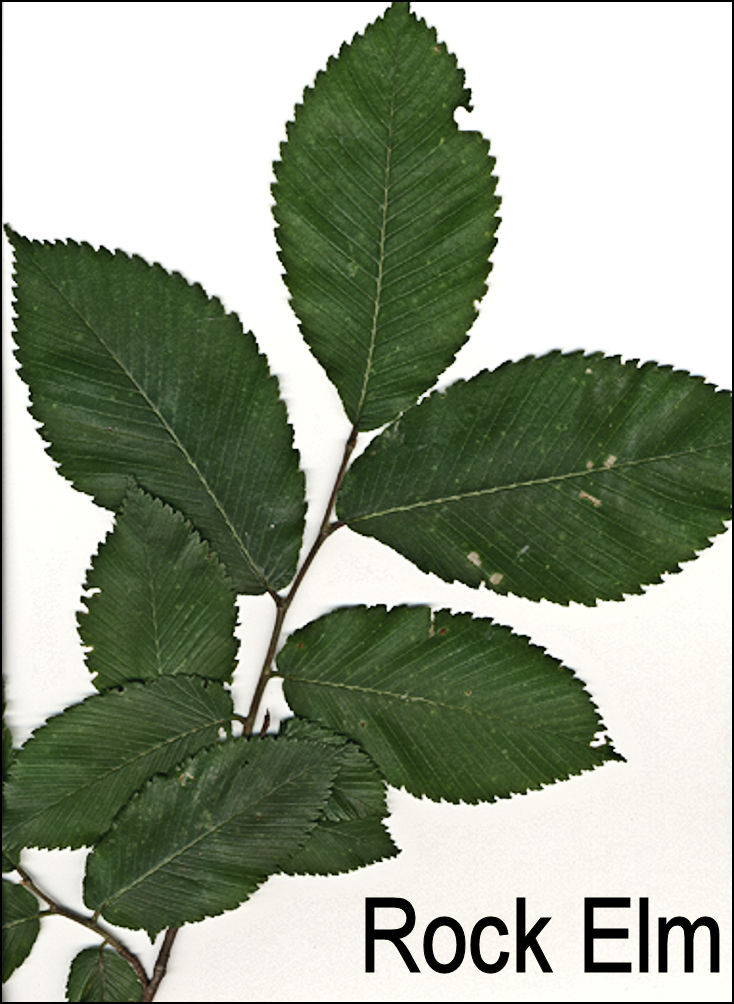
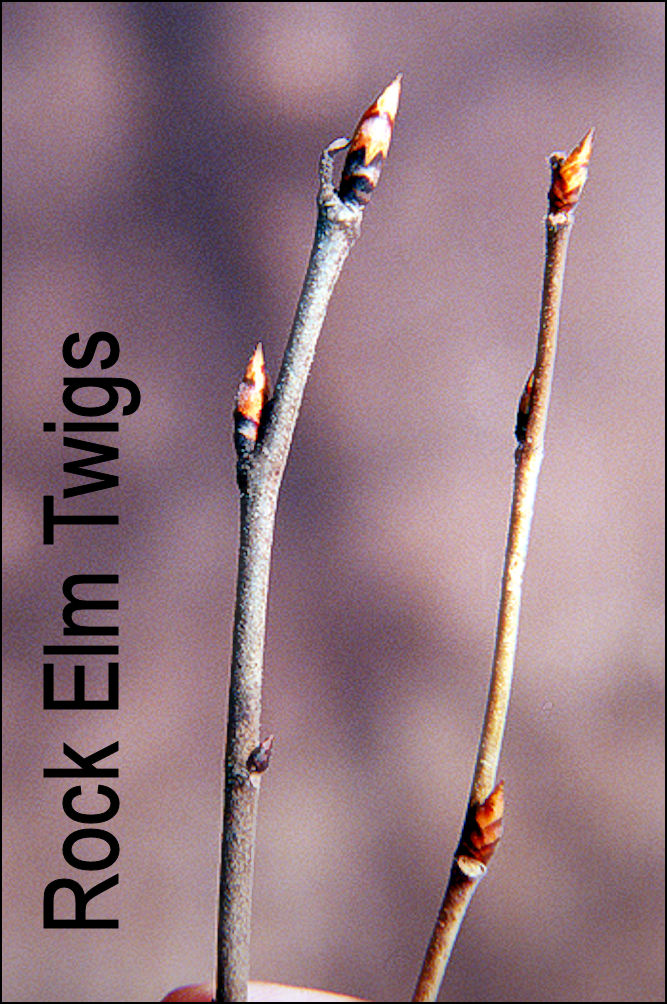
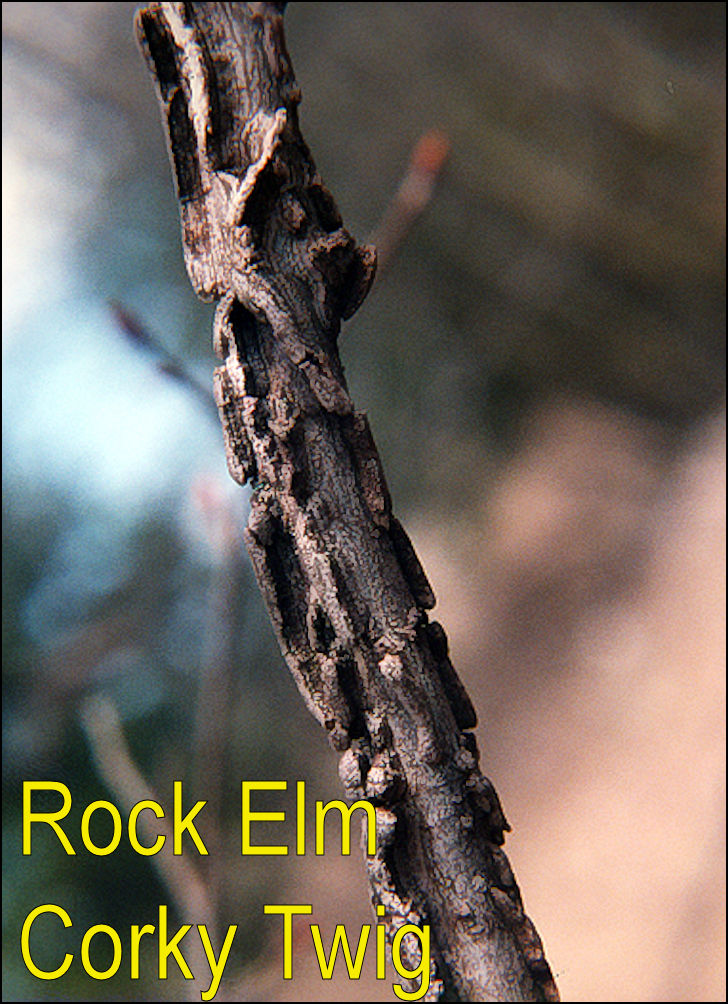
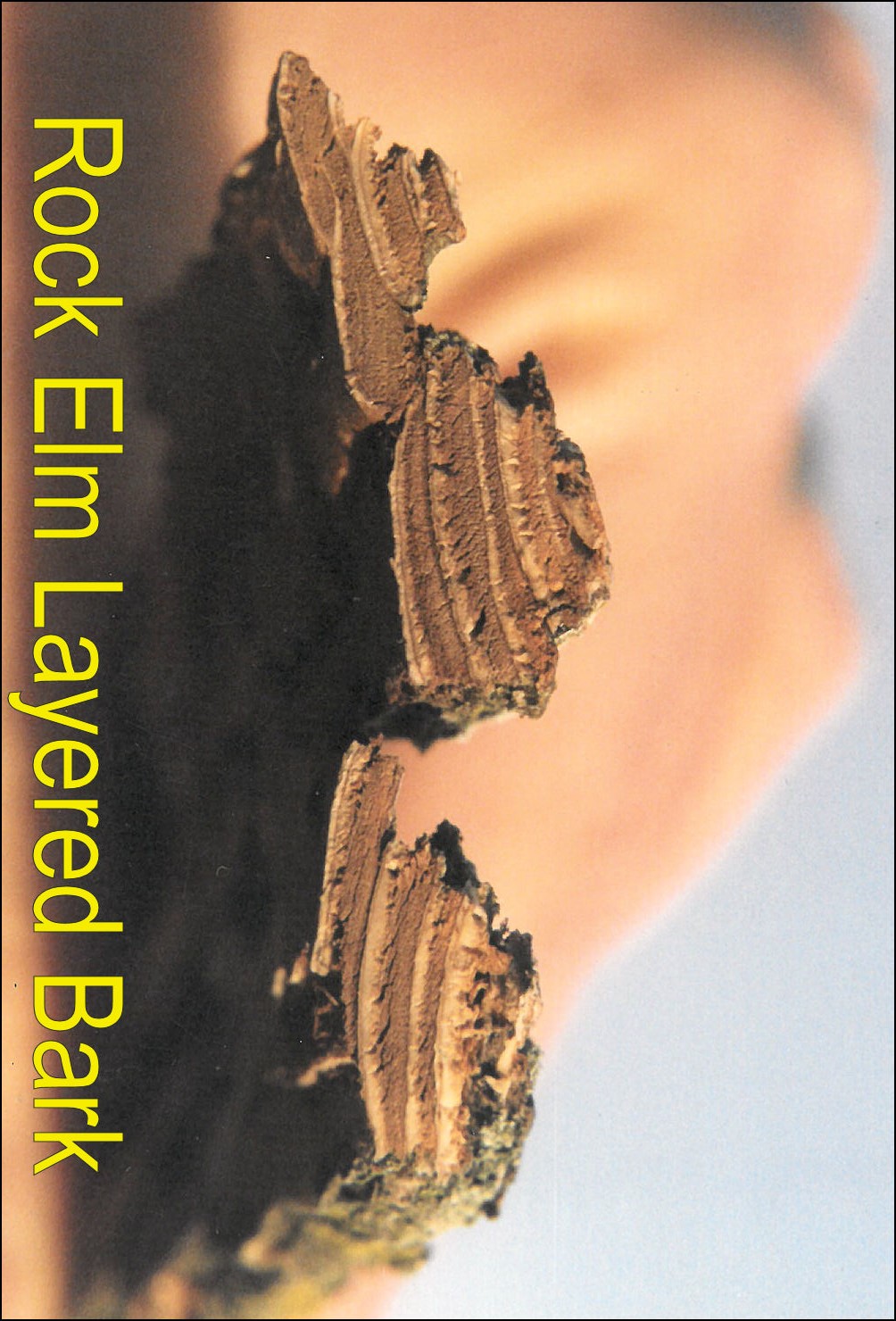
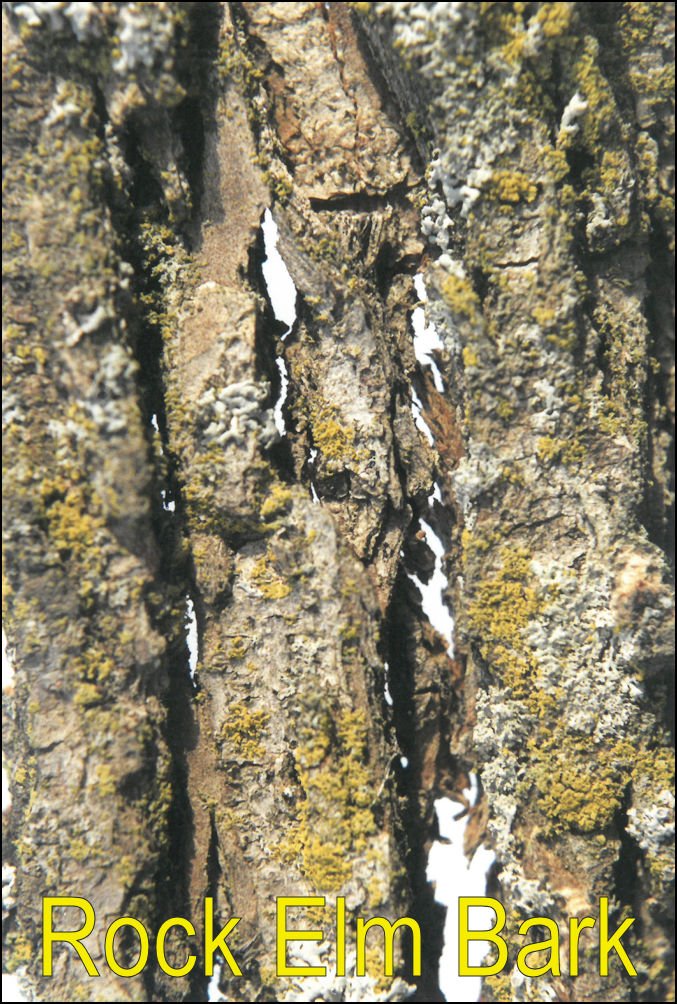
LEAVES are simple, 2-4 inches long, double-toothed, with an unequal leaf base. The hairless samaras are twice as wide at the end than at the
base. The trunk BARK on larger trees is deeply furrowed with cross-sectional layers
of light and dark. On older TWIGS, corky ridges form.
Younger TWIGS are without ridges and without fuzz. Buds are pointed and
about twice as long as wide. BRANCHING does not have the V-shaped or U-shaped
characteristic of other elms. The tree is rare in the U.P. Further south, it
occurs with upland hardwoods on richer soils. Common pests: loopers, cankerworms, mourning cloak, tussock moths, carpenter worm, oak twig pruner, Dutch elm disease.
AMERICAN HACKBERRY (Celtis occidentalis)
Other Names: Sugarberry, False Elm
Key ID Features: Leaves, Corky Twigs, Chambered Twig Piths, Fruits
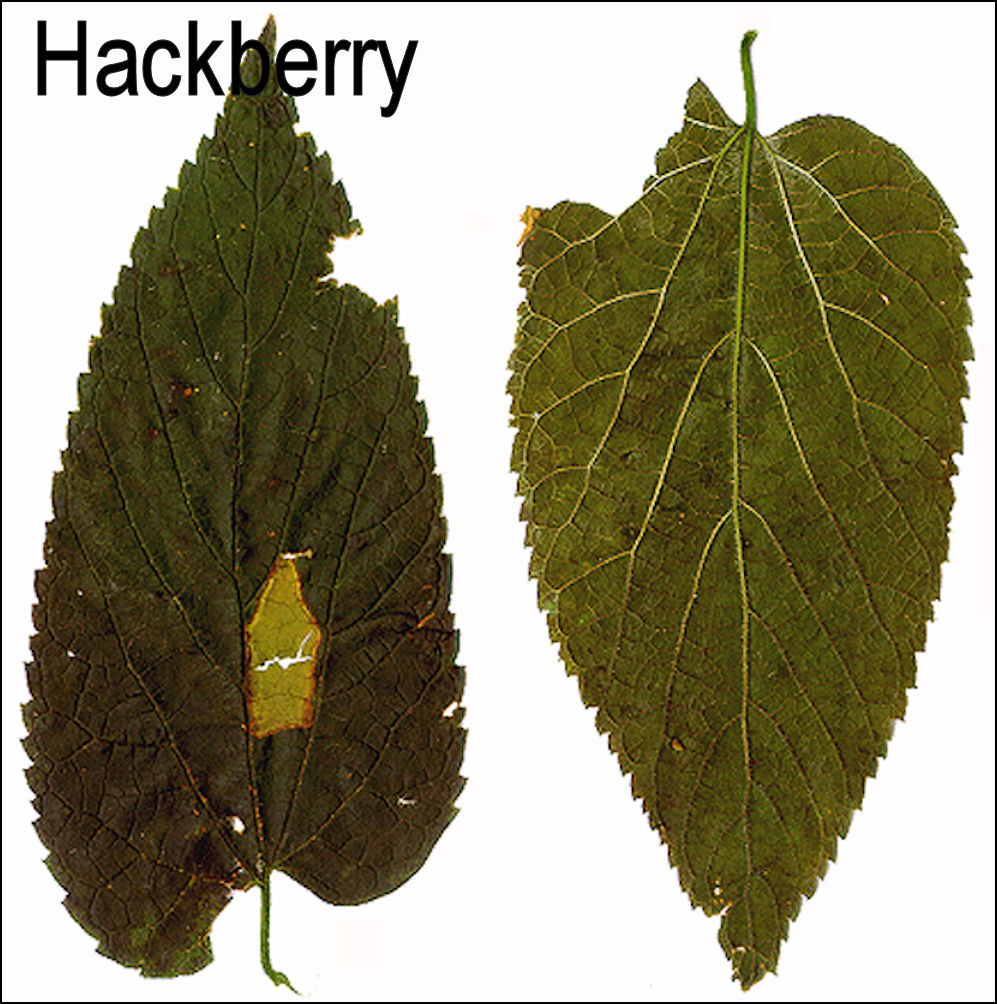
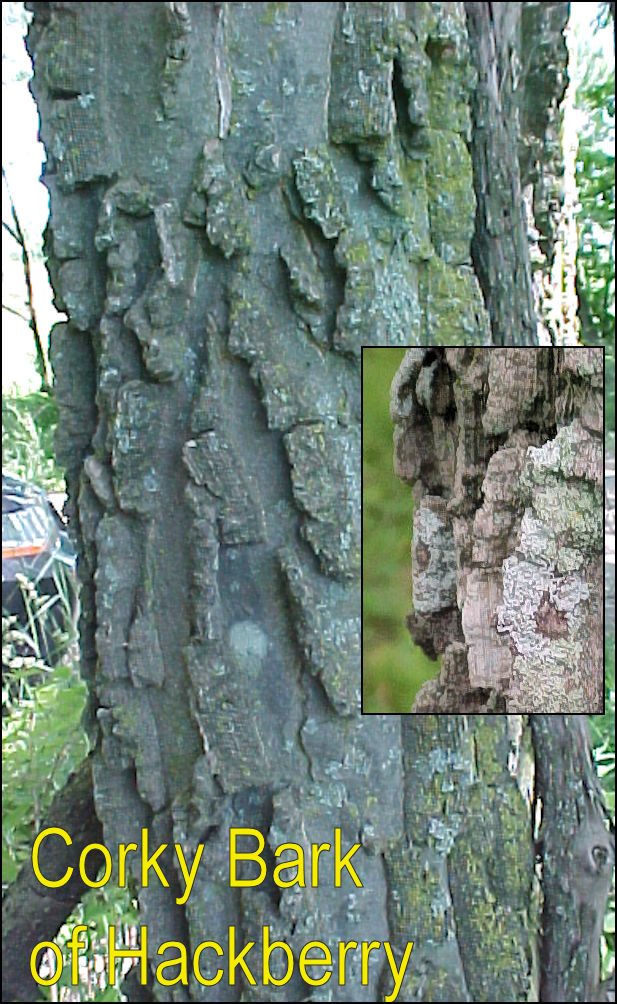

LEAVES 2-4 inches long,
coarsely toothed (strongly pointed toward leaf tip), leaf bases mostly unequal,
surfaces are smooth (not scratchy like American and slippery elm). Blue,
berry-like FRUITS ripen in the fall. Trunk bark and twigs have CORKY RIDGES.
The TWIGS have a zig-zag pattern and sometimes finely chambered piths at the nodes. It's a small tree that usually grows
along river courses but is rare in the U.P. Common pests: leaf galls, tussock moths.
Click on the blue to return
the Deciduous Summer Key or the Deciduous
Winter Key.
Click HERE to return to the home page.
A note about the images on this website, click here.
This site created and maintained by Bill Cook, MSU Extension Forester for the Upper Peninsula of Michigan. Editing and modification is ongoing. Submit suggestions, questions, and corrections to cookwi@msu.edu or call 906-786-1575.